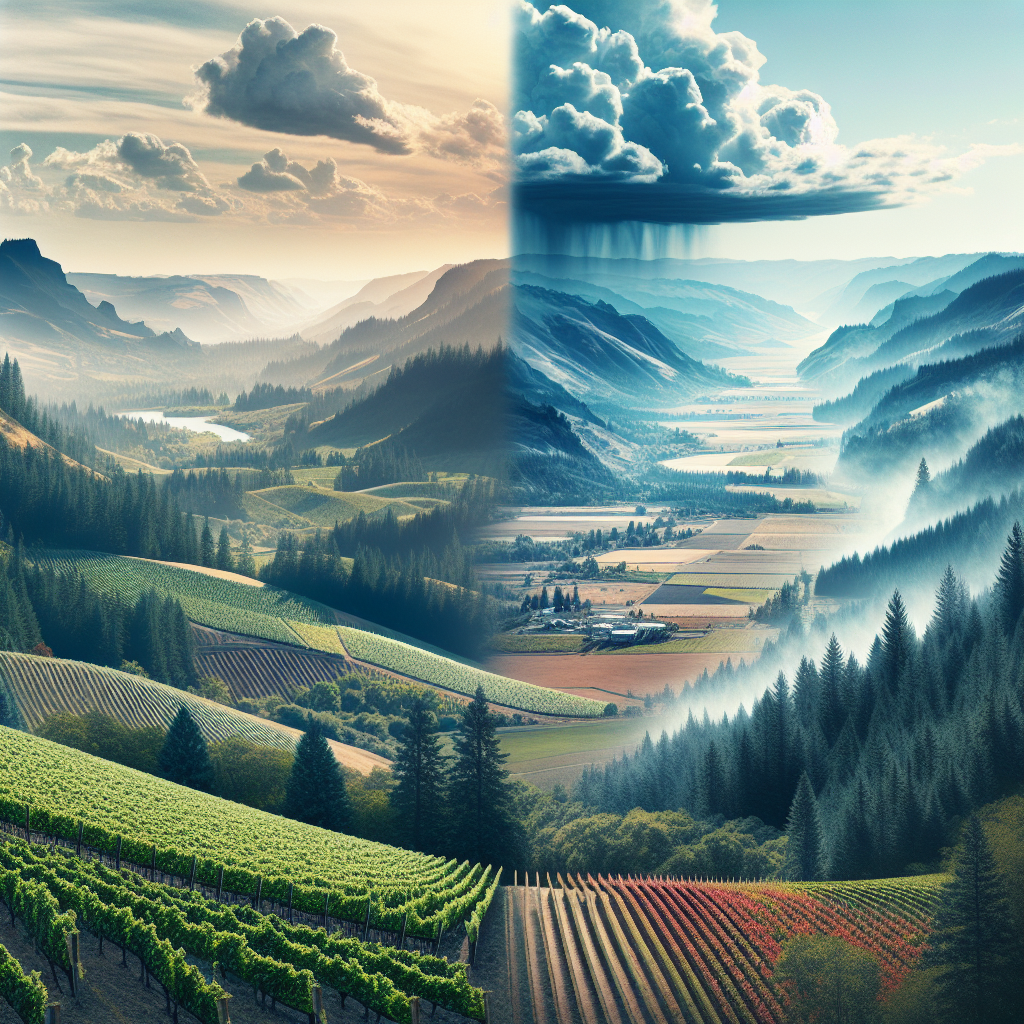Climate change and Oregon’s famed wine industry: A local perspective
Nestled in the Pacific Northwest, our beloved state of Oregon is a picturesque vision of rolling hills, verdant valleys, and neatly pruned vineyards stretching as far as the eye can see. Amidst the towering Douglas firs and the misty cascades of Multnomah Falls, lies the heart and soul of what I fondly call Oregon’s liquid poetry – its wines.
But those of us who’ve walked Pinot Noir laden vineyards in the Willamette Valley or enjoyed a sunset over Rogue Valley’s Merlot, know that these intoxicating scenes hide a pressing concern – the impact of global climate change on Oregon’s wine industry.
How is Mother Nature tipping the glass?
Climatic conditions have a significant hand in where the grapes for our stellar wines flourish best – a fact known to all from seasoned viticulturists to the casual winery visitor. Our diverse climate, with warm summers and wet winters, is certainly a boon. But these perfect conditions are slowly changing as the invisible hand of climate change stirs the pot, or shall we say, the wine barrel.

Higher average temperatures are causing earlier bud breaks in vineyards across our beautiful state. Those who’ve had the privilege of navigating the winding trail up to Eyrie Vineyards or savoring a picnic among Adelsheim’s sprawling vines would know what this means. Earlier bud break can lead to premature ripening and altered taste of our beloved tipple. We’re seeing many-a-eyebrow-raising early vintages, that while rich and warm, miss the characteristic brightness of a traditional Oregon wine.
Our usually gentle autumns, complete with just-enough rainfall are heading towards the extremes. As any local would attest, who needs a weather app when you have the Coburg Hills as a barometer? But these welcome anticipations of rains can turn sour, as violent storms and excessive rainfall run the risk of ruining grape crops. Conversely, the increased incidents of wildfires, like the gnarly Yacolt Burn or the more recent Labor Day fires, can cause smoke taint in grapes as they did in 2020, giving our wines an unwelcome smoky flavor.
What is our vinous tribe doing about it?
Good ol’ Oregon resilience is very much in evidence within our vineyards. Our innovative winemakers are adopting creative strategies to deliciously tackle climate change. We are seeing vineyards in warm locations, like the ribbon of wine country threading from Applegate Valley to the Illinois River, experimenting with later-ripening varietals, such as Cabernet Sauvignon.
On the other side, vineyards in cooler, high altitude areas of the Willamette Valley are playing with early ripening grapes, like the exquisite Albariño, to adapt to the changing climate profile. It’s heartening to see these vineyards, in keeping with the spirit of our Saturday Market ethos, play a violin suite on organic farming and exploring Indigo Rose vines under the summer sun.
And what about everyone’s favorite Pinot Noir, you ask? Well, given that Southern Oregon’s Bear Creek wine trail and the picturesque Umpqua Valley are renowned for their Pinot, our winemakers are getting clever there too.
Some winemakers are exploring a sort of altitude shuffle in an attempt to keep the noble grape in its cool comfort zone. They are simply moving uphill, if you like! To locations like Southern Oregon’s high elevation Red Hills Douglas County AVA. Now that’s the kind of rising we don’t mind.
Brewing admiration in a glass
As the brush strokes of climate change color our idyllic wine country in shades we’re not familiar with, one thing stands out – the perseverance of Oregon’s wine community. Whether it’s Argyle experimenting with different yeast strains, or Sokol Blosser harnessing sustainable winemaking practices, the endeavor of these winemakers is less an issue of sour grapes and more a testament to their adaptability.
So next time when you’re enjoying a glass of Oregon’s bounty, give a nod to the strength and tenacity of our local wine industry brimming in your glass. As we navigate the twists and turns of global warming, remember that every bottle of Oregon wine not only awakens the senses but tells a story of resilience and innovation. Like the waters of Crater Lake reflecting the changing skies, our vines too, mirror the challenges of a shifting world climate.
And that my dear friends, is something to be savored and celebrated. Here’s raising a toast to Oregon’s viticulturists who never stop exploring, adapting and innovating. May the glass of Oregon’s wine industry always be half full, even as the climate changes.
